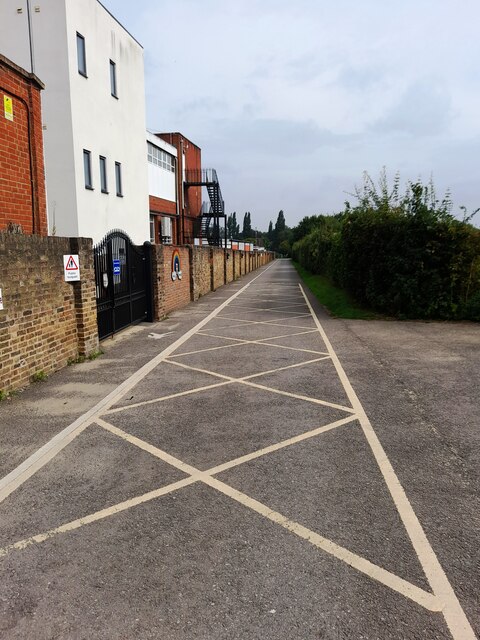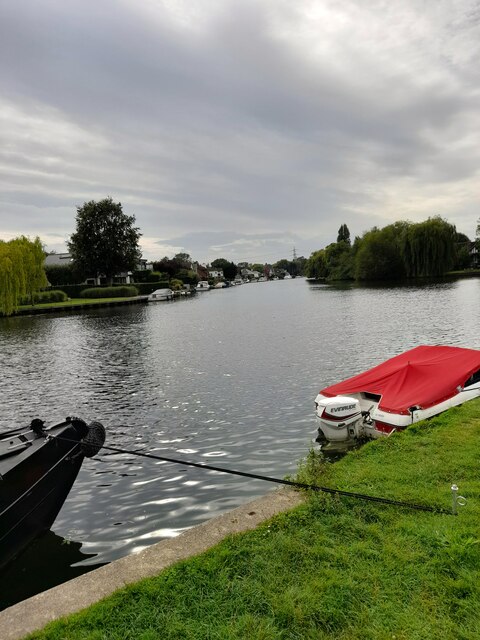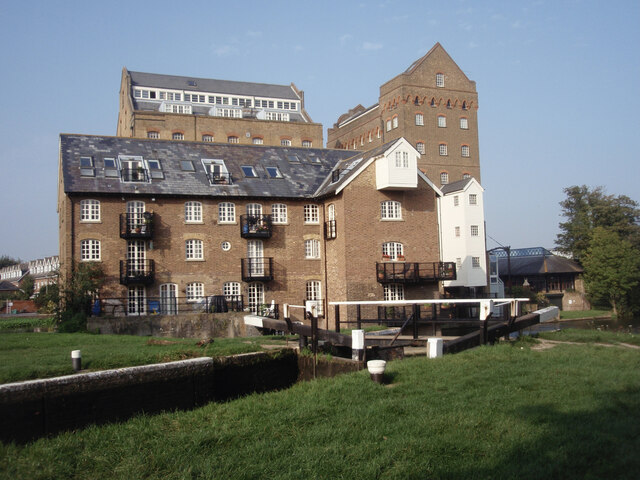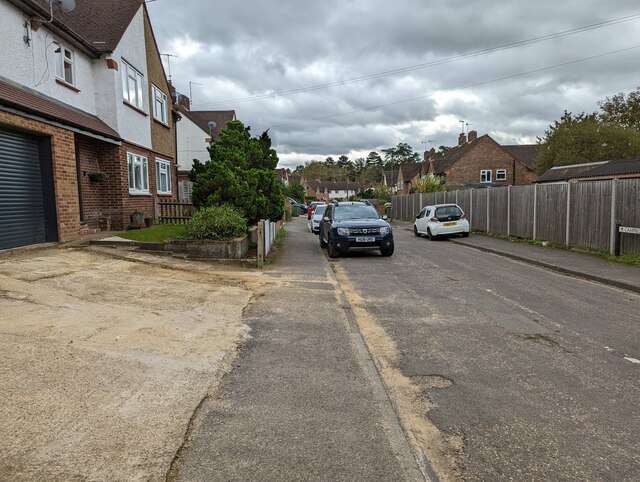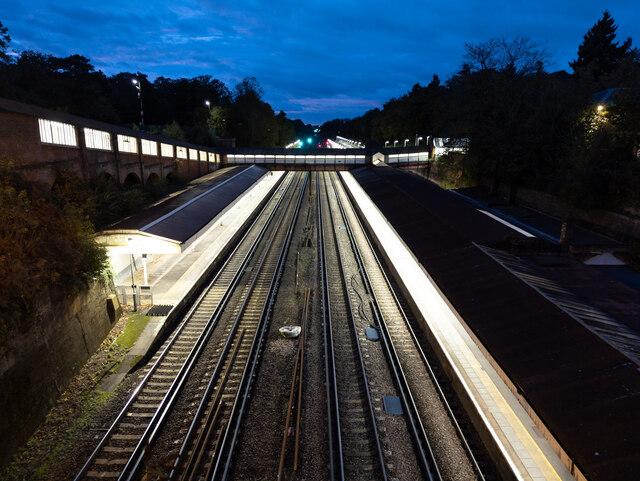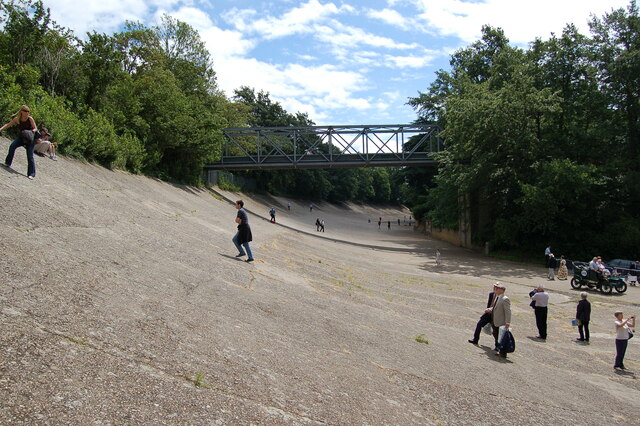Wey Meadows
Settlement in Surrey Runnymede
England
Wey Meadows
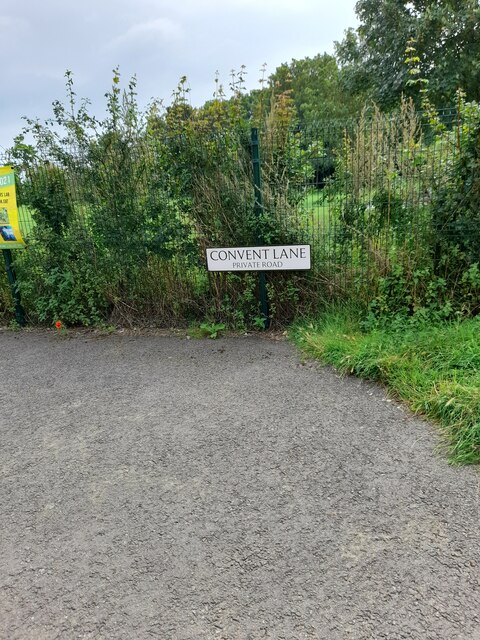
Wey Meadows is a picturesque area located in Surrey, England. Situated near the town of Guildford, this tranquil setting is known for its beautiful natural landscapes and rich biodiversity. Covering an area of approximately 70 acres, Wey Meadows is nestled along the banks of the River Wey, creating a stunning backdrop for both locals and visitors to enjoy.
The meadows are characterized by their lush green fields, dotted with vibrant wildflowers during the spring and summer months. The area is a haven for wildlife, with a wide variety of birds, insects, and small mammals calling it home. It provides an important habitat for many endangered and protected species, making it a popular spot for nature enthusiasts and birdwatchers.
The River Wey flows gently through the meadows, offering opportunities for boating, fishing, and leisurely walks along its banks. The waterway is also frequented by kayakers and canoeists seeking a peaceful and scenic adventure. Several footpaths and trails crisscross the area, allowing visitors to explore the diverse flora and fauna that thrive in this idyllic environment.
Wey Meadows is a popular destination for outdoor activities, such as picnicking, photography, and nature walks. The wide open spaces provide ample room for recreational activities, making it a favorite spot for families and dog walkers.
Overall, Wey Meadows is a serene and unspoiled natural area, offering a peaceful escape from the hustle and bustle of nearby urban areas. Its beauty and biodiversity make it a cherished gem in the heart of Surrey, attracting visitors from far and wide.
If you have any feedback on the listing, please let us know in the comments section below.
Wey Meadows Images
Images are sourced within 2km of 51.365427/-0.4719521 or Grid Reference TQ0664. Thanks to Geograph Open Source API. All images are credited.
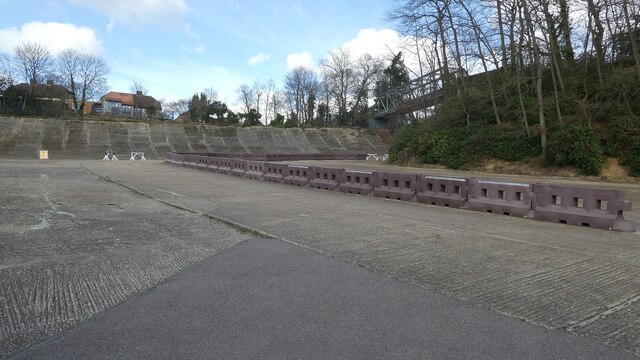
![Brooklands - Napier Railton - Lap record holder This monster of a car was designed by Reid Railton using a 24-litre W12 (3 banks of 4 cylinders)* Napier Lion aero engine. It was manufactured by Thomson & Taylor who were based at Brooklands. It had been commissioned by amateur racing driver (and three times holder of the World Land Speed record) John Cobb. It is thought that this car cost him around £10,000 in 1933 - more than a million in today's money.
On 7th October 1935 Cobb set the Brooklands Lap Record, completing the circuit in just 69 seconds at an average 143.44mph - see <span class="nowrap"><a title="https://www.brooklandsmuseum.com/about/latest-news/80th-anniversary-of-the-napier-railtons-ultimate-outer-lap-record#:~:text=On%20the%207th%20October%201935,beaten%20average%20of%20143.44mph" rel="nofollow ugc noopener" href="https://www.brooklandsmuseum.com/about/latest-news/80th-anniversary-of-the-napier-railtons-ultimate-outer-lap-record#:~:text=On%20the%207th%20October%201935,beaten%20average%20of%20143.44mph">Link</a><img style="margin-left:2px;" alt="External link" title="External link - shift click to open in new window" src="https://s1.geograph.org.uk/img/external.png" width="10" height="10"/></span> for more details of this run.
Its fuel tank holds 65 gallons, which at today&#039;s [2022] petrol prices would cost about £500 to fill - mind you, it needs a decent sized tank as it only manages about 5mpg!
This car is still in perfect running order and is often seen around the country at events such as the Goodwood Festival of Speed.
* Engine details: High compression version (6.1:1) (RAF specification). Naturally aspirated (no supercharger) Napier Lion aero engine. W12 (broad arrow) cylinder configuration of 23.944 litres capacity. Producing 580 bhp (433 kW) at 2585rpm (recorded at 5,000ft), and 1,250 pound-foot (1.695 kNm) of torque.](https://s2.geograph.org.uk/geophotos/07/12/06/7120698_83e9f0cd.jpg)
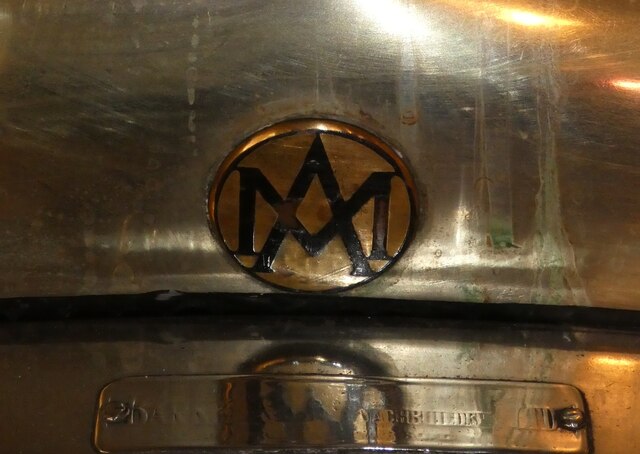
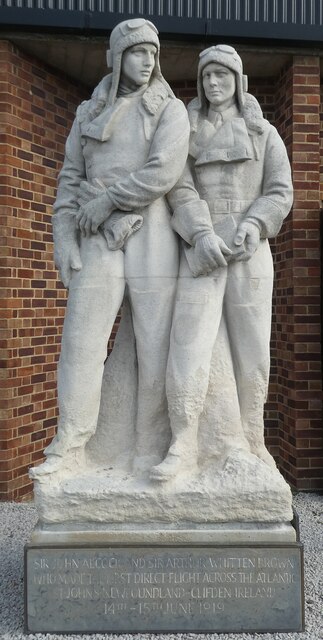
![Brooklands - Rolls Royce Merlin Engine Mk61 The Rolls Royce Merlin Engine was fitted to many iconic WWII aircraft including the Hawker Hurricane (fighter) from its prototype in 1935, the Vickers Wellington (bomber) and Supermarine Spitfire (fighter). The Mk61 seen here was developed in 1942 and was fitted to the Spitfire Mk IX and XI, the latter being a photo-reconnaissance aircraft.
The engine specification for the Mk61 is:
Upright 60° V12 (12 cylinder)
1260bhp (940kW)
27 litre (1637 cu in)
Bore 5.4&quot; (137mm)
Stroke 6&quot; (152mm)
[Note: Assuming the capacity and bore are correct, the stroke is probably nearer 5.95&quot; than 6&quot;]](https://s2.geograph.org.uk/geophotos/07/12/09/7120986_05bb7416.jpg)
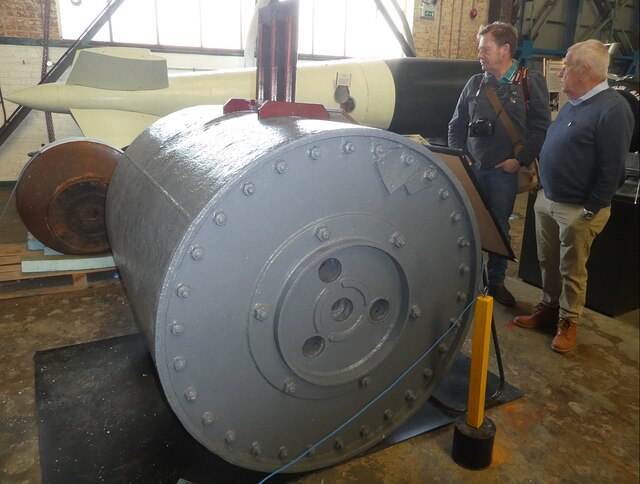
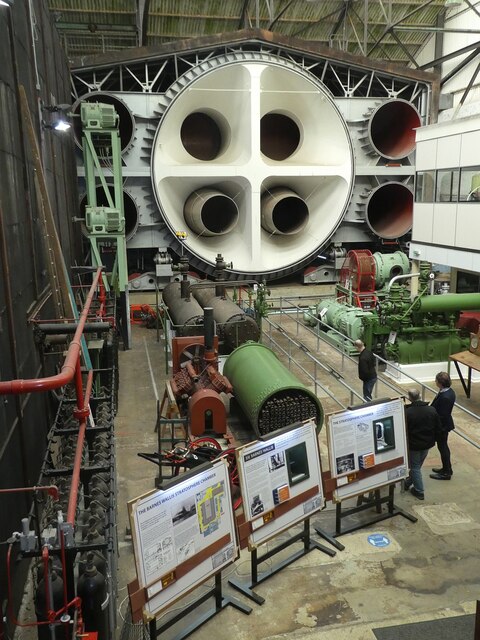

![Brooklands - Concorde 202 G-BBDG ('Delta Golf') A view of Concorde 202 G-BBDG (&#039;Delta Golf&#039;) looking along its fuselage from its pointed nosecone. G-BBDG was the first plane in history to carry 100 passengers at twice the speed of sound. It also has the distinction of having been used as the training plane for every Concorde pilot.
If you visit Brooklands, you can pay a little extra [£6 as of 2022] to enjoy the Concorde Experience where you go onboard and learn a lot of interesting facts about this amazing piece of engineering.](https://s1.geograph.org.uk/geophotos/07/12/12/7121285_96ce0c87.jpg)
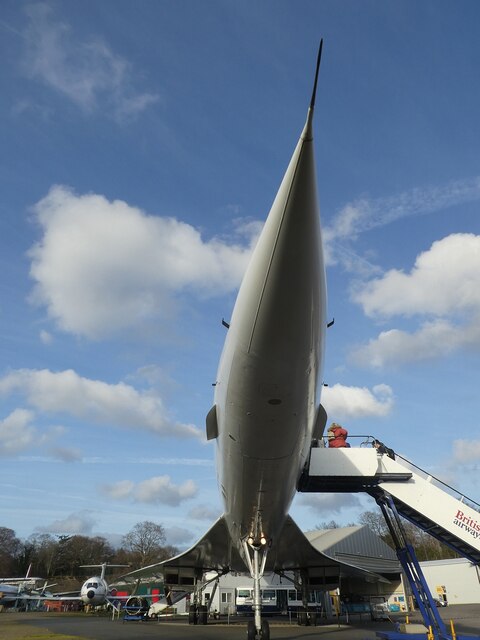
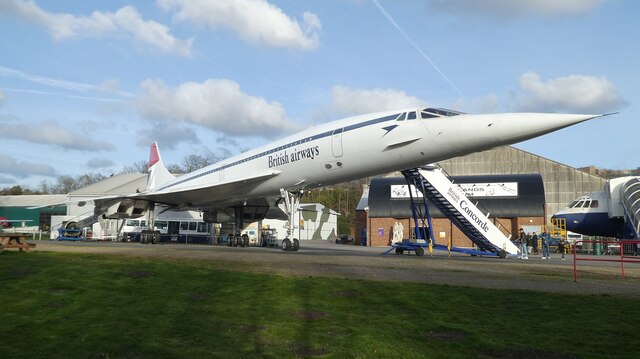
Wey Meadows is located at Grid Ref: TQ0664 (Lat: 51.365427, Lng: -0.4719521)
Administrative County: Surrey
District: Runnymede
Police Authority: Surrey
What 3 Words
///locker.teach.faded. Near Weybridge, Surrey
Nearby Locations
Related Wikis
Coxes Lock
Coxes Lock is towards the northern end of the Wey Navigation parallel to the River Wey in Addlestone, Surrey, Most parts of the navigation are canal sections...
Martin Hotine
Brigadier Martin Hotine CMG CBE (17 June 1898 – 12 November 1968) was the head of the Trigonometrical and Levelling Division of the Ordnance Survey responsible...
Heathside School
Heathside School is a co-educational secondary school for students aged 11–18 situated in Brooklands Lane, Weybridge, Surrey, England. The Executive Principal...
Weybridge railway station
Weybridge railway station is near the established midpoint of Weybridge in Surrey, England and south of its town centre. It is on the South West Main Line...
Addlestone railway station
Addlestone railway station serves the town of Addlestone in the Runnymede District of Surrey, England. It is located on the Chertsey Branch Line and is...
St George's College, Weybridge
St George's Weybridge is an independent mixed Roman Catholic co-educational Josephite day school in Surrey, taking pupils from 3 to 18. St George's Weybridge...
BAC Concorde G-BBDG
G-BBDG (manufacturer's serial number 202, known as "Delta Golf") was the British development Concorde built for evaluation testing. Along with the French...
Weybridge Heath
Weybridge Heath is a part of Weybridge common, in South East England. The Heath comprises 47 acres (190,200 square metres) of lowland heathland that runs...
Related Videos
Brooklands #shorts #travel
Brooklands #shorts #travel A Weybridge-től délre található Brooklands Múzeum volt a brit motorsport és repülés szülőhelye.
CHERTSEY🐾Walk the town👀Chertsey Camping and Caravanning Club🔆
Outside of the Congestion Zone and Low Emission Zone✈️ Take a walk around Chertsey town,✈️ Walk alone the Thames ...
Weybridge Town Centre Street View, Surrey, UK, England 🇬🇧 4K HDR
DATE RECORDED - 18 July 2022 Monday LOCATION - https://goo.gl/maps/eTtGx6QCJ93MmX989 #Surrey #UK #England ...
Nearby Amenities
Located within 500m of 51.365427,-0.4719521Have you been to Wey Meadows?
Leave your review of Wey Meadows below (or comments, questions and feedback).
